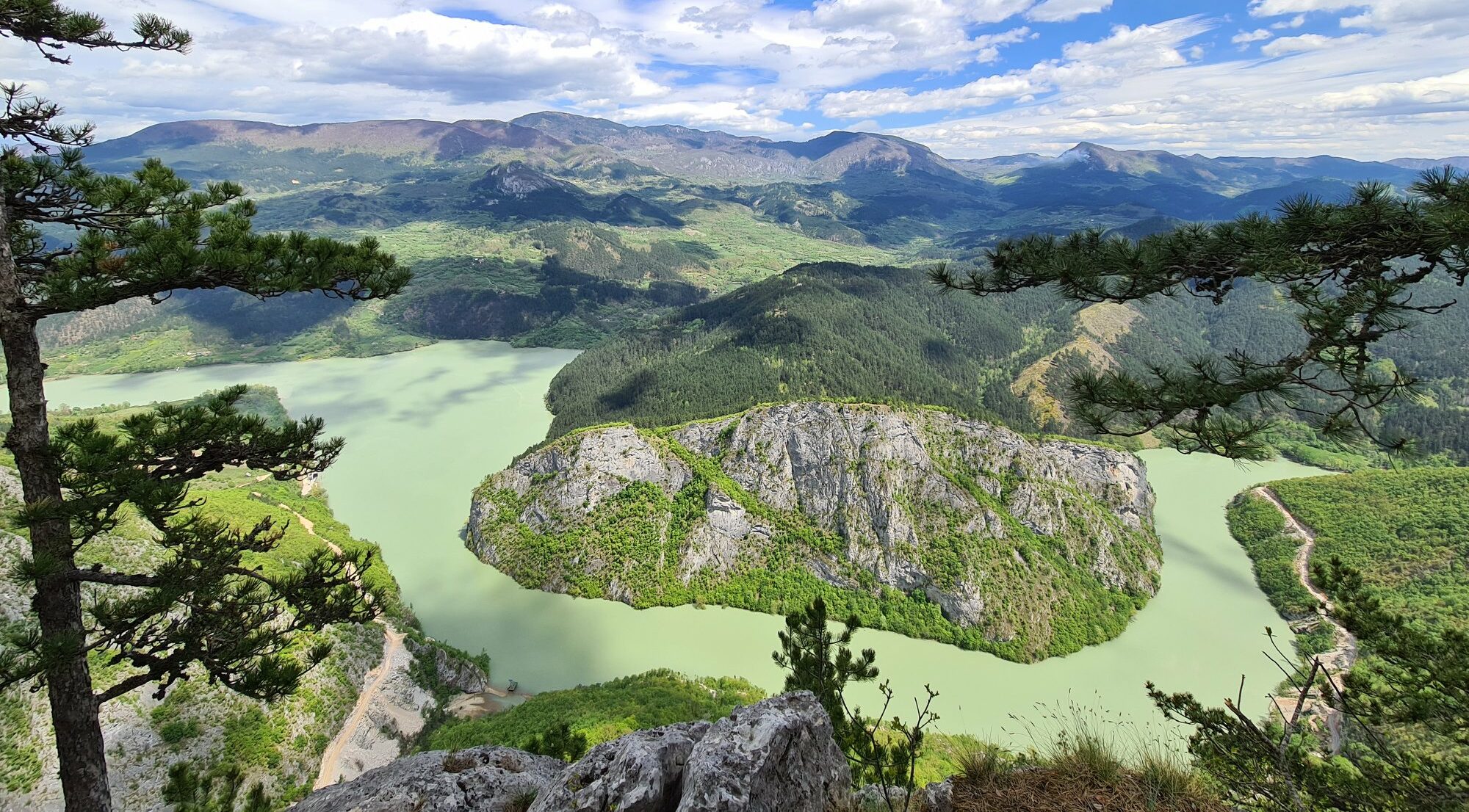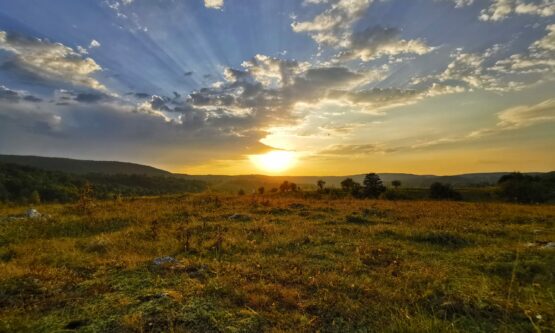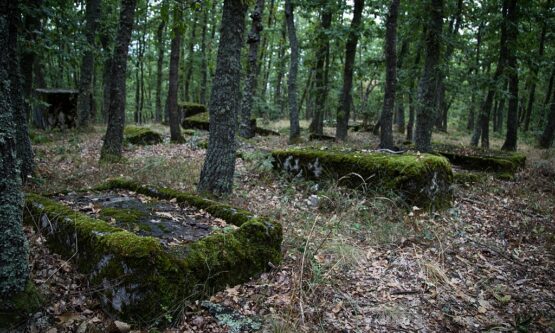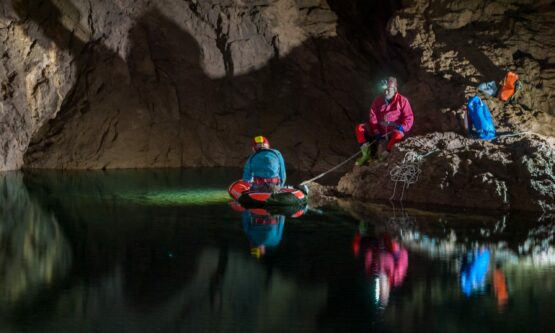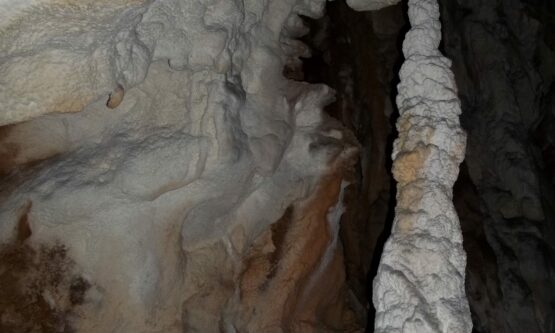Welcome to Rogatica
Nestled among forested mountain landscapes intersected with crystal-clear fish abundant rivers, the municipality of Rogatica is an area of not only natural beauty but also of cultural and historical attractions. Once renowned for its stud farm in Borike, where Arabian and Bosnian mountain horses were bred, the area welcomed numerous notable figures. The famous Yugoslav rock band Bijelo Dugme along with poet Dusko Trifunovic recorded a song here for their second album “Šta bi dao da si na mom mjestu”. Their well-known song “Pozurite konji moji” (Hurry Up, My Horses) was recorded on Borike.
Rogatica was first officially mentioned as a settlement and urban center in the 15th century. The town’s name is derived from the Rogatici family. During the Ottoman period, from the 16th century onwards, it was also referred to as Celebi Pazar. Numerous Stecak tombstones scattered across the surrounding area testify to the region’s rich history.
One of its most famous landmarks is the stone bridge over the Zepa river, whose beauty was immortalized by Nobel prize winner Ivo Andric. Located 35km northeast of Rogatica, the bridge’s construction is associated with the building of the Mehmed Pasha Sokolovic Bridge in Visegrad and is believed to have been completed in the second half of the 16th century.
Nature
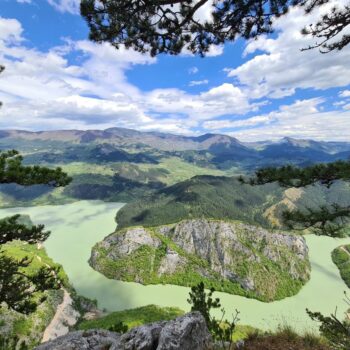
The region’s breathtaking natural beauty was officially acknowledged in 2021 with the establishing of the Praca Nature Park. Situated within the municipality of Rogatica, the park encompasses the middle course and watershed of the Praca river, covering an area of 4,067.89 hectares.
Praca Nature Park offers both natural and cultural landmarks. Highlights include numerous caves such as Govjestica, Banj Stijena and Golubovic cave, along with wonderful viewpoints, steep canyon cliffs and abundant birdlife with over 85 species. Among its treasures is a 450-year-old bear hazel tree, standing 14 meters tall with a broad canopy – a true rarity, as this endemic species typically has a lifespan of around 200 years. Additional attractions include the medieval town of Borac and Stecak necropolises. These features make the park an extraordinary destination for nature lovers.
Culture

Human settlements in this area originate back to the prehistoric times. Regarding its Slavic history, the region is a part of a Byzantine-Oriental heritage. Rogatica is first mentioned as a settlement and urban center in official documents as early as 1425.
Rogatica is home to 88 localities with the total of 2628 Stecak tombstones, including approximately 176 slabs, 2165 chests, 264 clay tiles and 23 pillars. In terms of the number of tombstones, Rogatica ranks second in Republic of Srpska and third in Bosnia and Herzegovina. These tombstones are grouped around ancient settlements, forming small or large necropolises. The largest concentration is within the Borak necropolis, which contains 212 stones. The necropolis been enlisted as a national monument of Bosnia and Herzegovina since 2008.
The uniqueness of Rogaticas Stecak tombstones lies in their diversity in form, reliefs, symbols, decorations and inscriptions.
From the Rogatica region, six Stecak stones were relocated to the National Museum in Sarajevo. These tombstones are among the most representative monuments showcasing the customs, literacy and artistic aspirations of the area’s old inhabitants. In the park of the Rogatica Health Center, a small collection of stone monuments (lapidaries from the Roman era) has been established. These artifacts serve as invaluable documents of the town life and development during prehistory.
The most famous cultural and historical monument in Rogatica is undoubtedly the bridge on the Zepa river. Recognized for its historical and architectural significance, it has been proclaimed a National Monument of Bosnia and Herzegovina.
Adventure
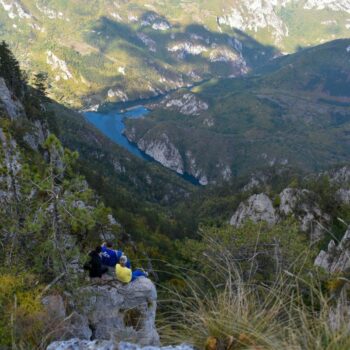
The hills surrounding Rogatica are ideal for hours-long hikes. For adventure seekers, Rogatica offers diverse activities such as cave dwelling, navigating rapids and exploring endless forests.
The municipality lies along the Via Dinarica Green Trail and features a mountain biking route connecting Visegrad, Praca canyon, Sarajevo, Morine, Blagaj, Stolac and Dubrovnik. A hiking trail links Rogatica and Visegrad, climbing toward Sjemec and offering stunning views of surrounding hills and meadows. This trail extends from Andricgrad in Visegrad.
An unforgettable kayaking or canoeing adventure awaits in the Praca river canyon. This route follows the remains of an old Austro-Hungarian railway and passes near Govjestica, the longest cave in the region. The canyon’s steep cliffs are covered with forests of oak, beech, hornbeam, ash and black pine, as well as diverse shrub species. This section of the river is the most suitable for water activities. While the Praca lacks the technical challenges of fast-moving waters, the beauty of its canyon and steady flow offer plenty of excitement.
Gastro

Romanija skorup-kajmak (clotted cream cheese) and Herzegovinian honey are the only certified food products from the Republic of Srpska, praised for their authenticity and quality. Soon, the famous Borike potato could join them. Cultivated for generations in the highland villages at altitudes over 1000 meters, this potato is renowned for its unique flavor, attributed to the region’s unspoiled environment. It is ideal for baking or boiling, and often paired with young skorup-kajmak, pork or lamb roasts.
The potato shines in traditional dishes such as baked or boiled potato with skorup-kajmak, and as a side to roasted meats served in almost every local restaurant. Other specialties include cicvara (gruel) with honey, fried dough balls and pura (maize porridge) with kajmak.
For a genuine culinary experience, a visit to the rural household in Zilicina is highly recommended. Treat yourself to traditional dishes such as maize porridge, gruel, pies, meat under the bell, fried dough balls with kajmak or homegrown potatoes with kajmak. Don’t miss out on homemade brandies, wines and juices – products of local pride that have attracted visitors for years.
Tourist organization of Rogatica
Banja Stijena cave
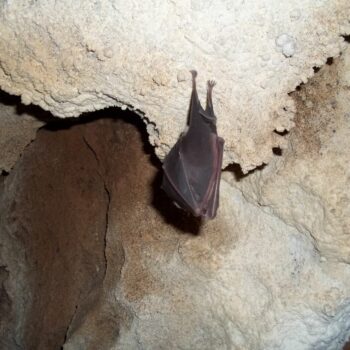
Also called the “Dark Cave,” Banja Stijena stretches for 1200 meters and is celebrated for its stunning variety of cave formations. Visitors can admire travertine basins, cascades, stalactites, columns, helictites, and a unique feature called “cave milk,” found at the end of the entrance passage. It’s regarded as one of the most beautiful caves in the Republic of Srpska.
Govjestica cave
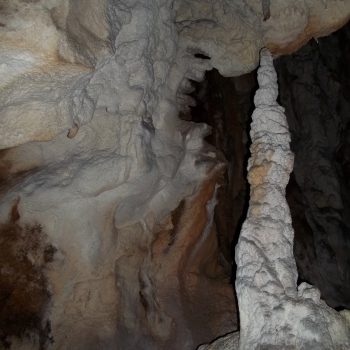
Govjestica is the largest cave system in the Republic of Srpska and Bosnia and Herzegovina, with an explored length of 9870 meters. Partial exploration has uncovered remains of cave bears and revealed unique water flows, multiple underground lakes and endemic cave species.
The bridge on Zepa
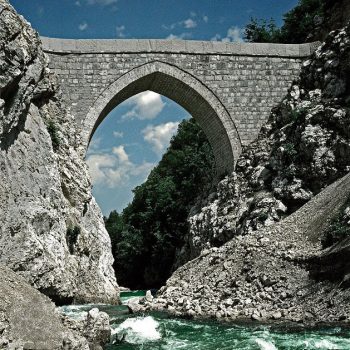
The most renowned cultural and historical monument of Rogatica is undoubtedly the bridge on Zepa.
The Zepa river is located 35km from Rogatica, nestled in a picturesque valley surrounded by high mountains. Its eastern section lies along the beautiful banks of lake Drina, providing a unique water connection to the nearby towns. The Drina canyon, with its tame, controlled river, hosts boats and ships traveling between Visegrad and Bajina Basta. This area is particularly attractive to hunters and fishermen and offers numerous tourist attractions such as Andric’s bridge (“The Bridge on the Zepa”), medieval town of Vratar, source of the Zepa river, Stecak necropolises and more, fulfilling the tourist offer of Rogatica.
The famous stone bridge over the Zepa river, whose beauty was masterfully described by the Nobel laureate Ivo Andric, is located 35km northeast of Rogatica. The construction of this bridge is related to the building of the famous Mehmed Pasha Sokolovic Bridge in Visegrad (16th century). Originally built near the confluence of the Zepa and Drina rivers as a crossing of a narrow gorge. It is believed to have been constructed by a student of Mimar Sinan, the architect of the Visegrad bridge.
With the construction of the Bajina Basta power plant the bridge was at risk, which caused its disassembly and reconstruction at a new location several kilometers upstream. Declared a national monument in 2005, the bridge has retained its authenticity and original beauty at its new location.
Borike

Approximately 18km northeast of Rogatica, at an altitude of 1100 meters, lies a true paradise for nature lovers – Borike. Known as a clean air resort, it is abundant with wildlife and meadows with various healing herbs. It is an ideal retreat for those seeking to escape urban noise and crowds, offering opportunities for nature walks, collecting healing herbs, forest fruits and mushrooms, or engaging in hunting, fishing, cycling and horseback riding.
In 1895, Borike became home to a stud farm specializing in Bosnian mountain and Arabian horse breeds, the only one of its kind in the Balkans. Visitors can take riding lessons or enjoy carriage rides through these scenic landscapes in the summer, as well as sleigh rides during the winter.
Borike is also home to the Church of St. Apostles Peter and Paul, built in 1909 and consecrated in 1911.
The local Orthodox population has combined the region’s religious traditions with cultural festivities, creating an event that showcases Serbian folklore groups, toasting customs, traditional singers and musicians, national wear and artists.
Rural household Zilicina
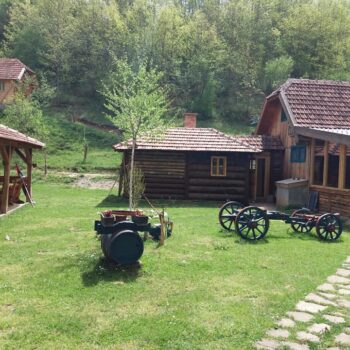
For rest and adventure, we recommend visiting the Zilicina rural household, located in the heart of unspoiled nature on the slopes of mount Romanija.
Surrounded by forests and meadows, and next to the Rakitnica river whose water is so pure it can be used for drinking, a mountain-style wooden object has been built. The interiors of the rooms and the restaurant are also crafted from wood, with green carpentry that evokes the nostalgia of stays with grandparents in their village homes.
The Brkic Zilicina rural household offers accommodations with 10 beds and a restaurant that can host 60 people indoors and around 40 in the summer patio. Guests of the complex can enjoy sand volleyball, futsal, horseback riding, forest walks and hiking to nearby peaks along trails that are part of the Via Dinarica green route.


